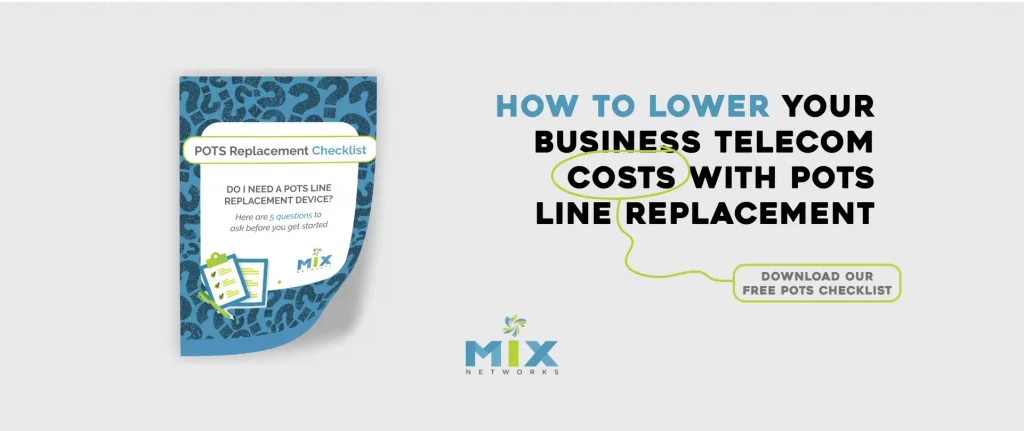Telecommunications is one of the most regulated industries in the country—and for good reason. It is not just a way for businesses to communicate and reach the public—it’s a lifeline to lifesaving help when needed for many. Ensuring that every person has reliable access to the telecommunications infrastructure is not something to leave to chance.
Historically, these lines have been served by a network of copper wires strung on poles, and each unique phone number required a dedicated line.
A requirement of the FCC for incumbent local exchange carriers is that when any changes are made to their wired infrastructure, they must notify the FCC (as per FCC Section 251 Wireline Network) and the public. As of the publishing of this blog, over 75 notices have been given to the FCC for the retirement of sections of the traditional copper wire servicing areas of Georgia, Illinois, Maryland, New York, New England, and more. Two hundred twenty notices were filed for the entire year of 2023. The evidence shows that while the change is not happening overnight – it is happening and will continue to impact businesses and homes until each traditional line has been replaced with digital solutions.
Advantages and Challenges of Replacing POTS Lines with Digital Telephone Systems
While replacing POTS lines with a digital telephone system provides numerous advantages, the process has potential challenges that should be addressed. One common hurdle is ensuring infrastructure compatibility, as your network infrastructure, internet connectivity, and power supply must meet the requirements of the chosen replacement option. Working closely with your provider to assess and resolve any compatibility issues is crucial. Additionally, user adaptation can pose a challenge, especially for those accustomed to the simplicity of traditional POTS lines. Providing comprehensive training and support to help users familiarize themselves with the new system’s features and workflows is essential, as is encouraging open communication and addressing any resistance to change.
Porting existing telephone numbers from the POTS system to the new digital system can also be complex and time-consuming. It requires careful coordination with your provider to ensure a smooth transition without disrupting your business operations. Furthermore, ensuring the new digital system meets your desired call quality and reliability standards is paramount, necessitating thorough testing and collaboration with your provider to address performance issues or bottlenecks.
Perhaps most importantly, choosing a reliable service provider is critical for a successful POTS line replacement. Thoroughly research a provider’s reputation, reliability guarantees, customer reviews, and contingency plans, such as redundant systems and backup plans to minimize downtime. By anticipating and proactively addressing these common challenges, you can minimize disruptions and increase the likelihood of a seamless transition to a modern digital telephone system.
Preparing Your Team for the Transition
A successful transition from traditional POTS lines to a digital telephone system relies heavily on how well your team is prepared for the change. Here are key strategies to ensure a smooth transition:
Creating a Transition Plan:
- Establish a timeline with clear milestones for each phase of the transition.
- Identify key stakeholders and assign roles and responsibilities.
- Develop a risk assessment and mitigation strategy for potential issues.
- Create a detailed training schedule for all affected employees.
- Plan for parallel running of old and new systems during the initial transition phase.
Importance of Clear Communication: Transparent and consistent communication is crucial throughout the transition process. Consider the following:
- Announce the upcoming changes well in advance, explaining the reasons and benefits.
- Provide regular updates on the transition’s progress through multiple channels (e.g., emails, meetings, intranet posts).
- Create a dedicated point of contact or helpdesk for transition-related queries.
- Use simple, non-technical language when explaining changes to non-IT staff.
- Address potential concerns proactively, such as job security or changes in work processes.
Gathering Employee Feedback and Addressing Concerns
Engaging your team in the transition process can significantly improve adoption rates. Here’s how:
- Conduct surveys before and during the transition to gauge employee sentiment and identify concerns.
- Hold focus group discussions with representatives from different departments.
- Implement a suggestion box (physical or digital) for anonymous feedback.
- Schedule regular Q&A sessions where employees can voice concerns directly to management.
- Create a feedback loop where employees can report issues and see how they’re being addressed.
By involving your team in the transition process, communicating clearly, and addressing concerns promptly, you can significantly reduce resistance to change and ensure a more successful adoption of your new digital telephone system.
Preparing for the Future: Embracing the Digital Telecommunications Era
As the telecommunications landscape evolves, the transition from traditional copper wire POTS lines to digital solutions is inevitable. While this shift brings numerous benefits, it also presents challenges that businesses must navigate carefully. By understanding the regulatory environment, anticipating potential obstacles, and working closely with reliable service providers, organizations can ensure a smooth transition to modern digital telephone systems. This evolution not only enhances communication capabilities but also aligns with the broader technological advancements shaping our interconnected world. As we move forward, embracing these changes will be crucial for businesses to maintain efficient, reliable, and future-proof telecommunications infrastructure.
Keep Reading:










One thought on “Overcoming Challenges in POTS Line Replacement”
Who helps the Disabled that rely on Telephony Analogue devices. Must these just be replaced? Who is paying for the removal of the Infrastructure on the current Public Easements? Local Gov’t. or the Carrier? In CA they are trying to get SB232 passed to give AT&T Indemnity on this existing Infrastructure, do you advise against this. Will these Aerials continue to blight the Easements?